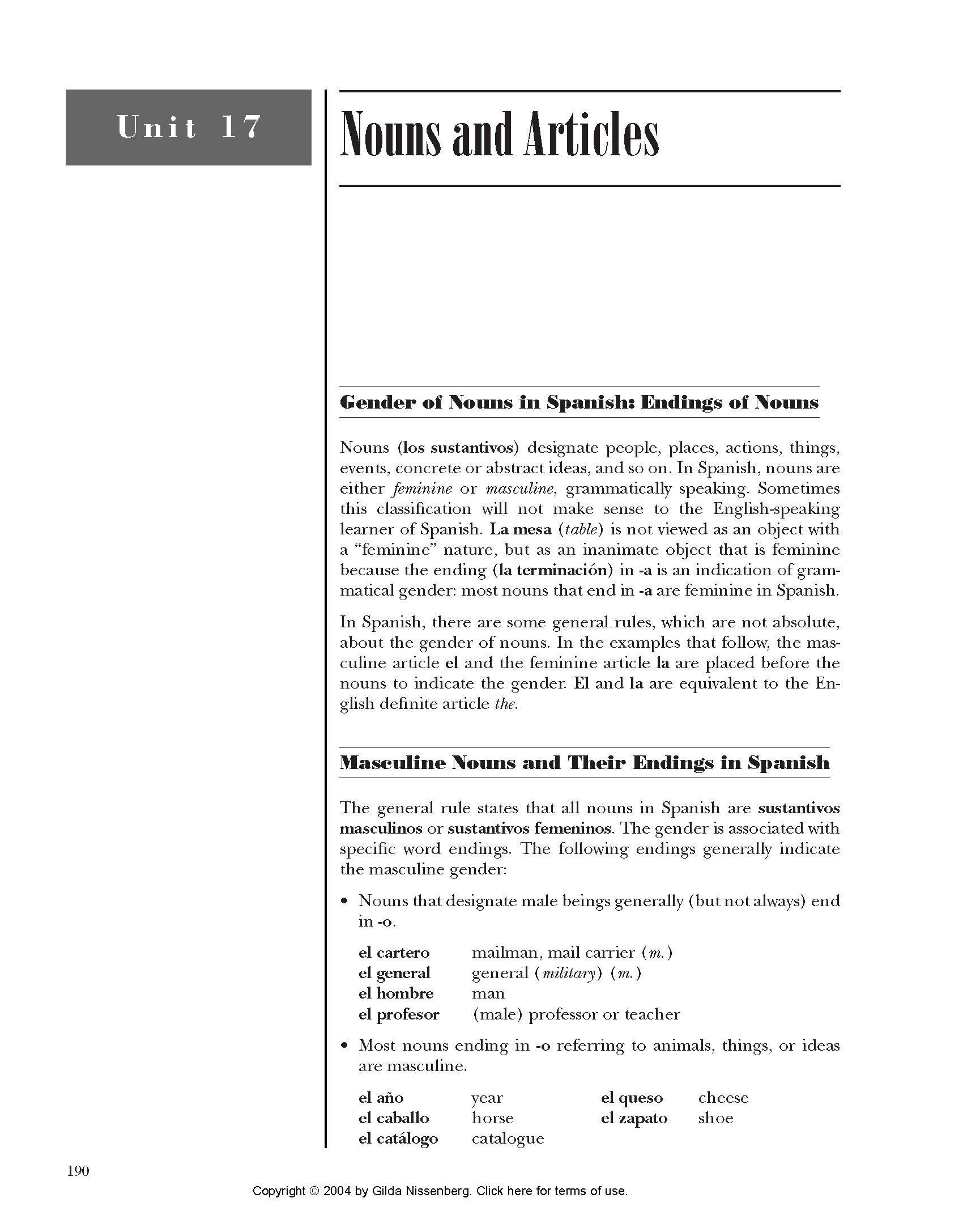CSG201

Unit 17
Nouns and Articles
Gender of \oiins in Spanish: Endings of \oiins
Nouns (los sustantivos) designate people, places, actions, things, events, concrete or abstract ideas, and so on. In Spanish, nouns are either feminine or masculine, grammatically speaking. Sometimes this classification will not make sense to the English-speaking learner of Spanish. La mesa (table) is not viewed as an object with a “feminine” naturę, but as an inanimate object that is feminine because the ending (la terminación) in -a is an indication of gram-matical gender: most nouns that end in -a are feminine in Spanish.
In Spanish, there are some generał rules, which are not absolute, about the gender of nouns. In the examples that follow, the masculine article el and the feminine article la are placed before the nouns to indicate the gender. El and la are equivalent to the En-glish definite article the.
Masculine \oims and Their Endings in Spanish
The generał rule States that all nouns in Spanish are sustantivos masculinos or sustantivos femeninos. The gender is associated with specific word endings. The following endings generally indicate the masculine gender:
• Nouns that designate małe beings generally (but not always) end
in -o.
el cartero mailman, mail carrier (m.) el generał generał (military) (rn.)
el hombre man el profesor (małe) professor or teacher
• Most nouns ending in -o referring to animals, things, or ideas are masculine.
el queso cheese
el zapato shoe
el ano year
el caballo horse
el catalogo catalogue
Copyright © 2004 by Giida Nissenberg. Ciick here for terms of use.
190
Wyszukiwarka
Podobne podstrony:
Summary p234 234 CONYERSATIONAL PORTUGUESE k. with parts of the body and articles of clothing inst
1933League oj Nałions — Treały Series.67 4. Explosive, inflammable, or dangerous substances and arti
both in local and global scalę. The article presents a verification and assessment of the effective
CSG210 Nouns and Articles 199Plural of Nouns The plural of nouns in Spanish is formed by adding the
Review ArticleHumań Thermoregulation and Measurement of Body Temperaturę in Exercise and Clinical
9 * ✓ Moving to the unconstitutional education situation in Quebec, Articles 12, 75 and 79 of Bill 1
CSG159 Unit 14Morę Uses of tlie Subjunctive: Adverb and Relative ClausesThe Suhjunetive in Adve
CSG210 Nouns and Articles 199Plural of Nouns The plural of nouns in Spanish is formed by adding the
CSG214 203 Nouns and Articles • with parts of the body, items of persona! hygiene,
Heterophyes LifeCycle Cercanae penetrate the skin of fresh/brackish water fish and encyst as&nb
00270 d021c6388981baccfa088288e9ff089 272 Montgomery Choice of Factors and Levels As noted in Table
więcej podobnych podstron